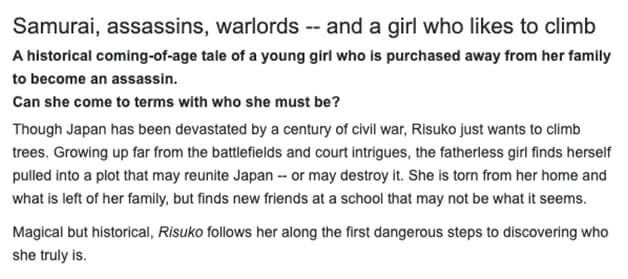By David Kudler
Great! You’ve gotten a potential reader to visit your book’s product page. Maybe it was your fabulous cover that intrigued them, or the brilliant title, or — hey! — maybe it was your name, you celebrity author you!
In any case, it’s now time to seal the proverbial deal. Make the sale. Get the interested customer to become a reader and, hopefully, a fan.
How?
Your book description, that’s how.
While not the most prominent piece of metadata attached to your book, the description is the one that does the heavy lifting.
Your keywords help them find your book. Your cover and title help draw them closer. But it will ultimately be your description that pulls them in and convinces them to buy — or pushes them away and loses the sale.
That’s a lot of pressure to put on a small clump of words. But they can do it!
You’ve spent hours, days, and weeks polishing the language inside your book. Take the time to craft a book description that shines just as bright, and it will reward you with sales for months and years to come.
I’m going to lay out an effective way to structure your book description. 1 There are other ways to do it — but this is a proven approach, and if you chose a different one, make sure it’s for a reason!
The Inverted Pyramid — Start with the Hook
When you’re planning out your book description, it’s a good idea to approach it as if you were writing a news story. Journalists never know how much page space or air time their story is going to get, so they are taught to write in what’s called an inverted pyramid. The idea is that the essential information is communicated up front. If anything needs to be cut, it can be trimmed from the bottom — where the less pertinent (and less exciting) information gets gathered.
The most important, exciting, sexiest nugget of information, what journalists call the lede, 2 should always go at the very top. Putting it further down in the story is what’s called burying the lede, and it’s considered a mortal sin in journalism. Subtlety and complexity may be virtues in storytelling — but in writing news copy or book descriptions, you have to grab the reader immediately.
In writing ad copy — which is what a book description is — that exciting, sexy nugget is called the hook.
The most popular hook with major publishers tends to be a review in a major news source or a major award. Lacking that, the hook should be a one- or two-sentence summing up, not of your book’s plot/subject, but of what makes it worth reading. It should pique the reader’s interest and make them want to read more. As with the cover, it should make a promise, implying your book’s genre and tone, but mostly, it should leave the reader thinking, Oh, wow! I wonder how that works out! 3
Say we’re trying to come up with a hook for Jane Austen’s Pride & Prejudice. This is where you, as the author/publisher, need to break out your inner English major and decide what you think your book is actually about. Is Pride & Prejudice a great love story? Sure. But is that what it’s about?
Me, I think the book is about what the title tells us it is: it’s about two people who are strongly attracted to each other from the beginning, but whose pride prejudices each of them against the other. You may think it’s about something else, but play along with me, here.
Okay, that’s what the book’s about. However, the hook isn’t a thesis statement in an English paper. So the hook can’t just say what I think my book’s about. What I want to do is tempt the reader with that idea and make them want to find out more — by reading more of the description and, hopefully, hitting the Buy Now button and reading the whole book.
So the hook could be something like this: Love at first sight can take a long, long time.
It’s a paradox, a mystery — but if the reader is a romance fan, it will (hopefully) spark their interest and make them want to read more.
If I were writing a non-fiction book about, say, marketing ebooks, perhaps I would start with a hook something like this: If an ebook is just a website in a box, how do we get readers to want to look inside??
See what I did there? I asked a question — a time-honored marketing technique that (hopefully) intrigues the reader and makes them want to read on in order to find out the answer. 4 As with the paradox I created for the Austen novel, it sets up a narrative tension; if the reader is pulled in at all, they’ll have a hard time stopping reading. And once they’re pulled in, you’ve hooked them.
Find the strongest, most irresistible hook you can — but make sure that your book delivers on that promise. When I first published my YA historical novel Risuko, 5 the first title in my Seasons of the Sword series, I used a pretty kickass hook: Can one girl win a war? As with the P&P hook above, it sets up a paradox that makes the reader want to find out more.
The problem was that, though the hook was appropriate for the whole series, the first book didn’t actually answer that question — it was just the beginning of the protagonist’s journey. And so I had a number of readers who were disappointed. Overpromise and underdeliver may be a good way to get a reader to buy your books — once. But it sure won’t turn them into fans. And it won’t result in good reviews.
I changed the hook to read, Samurai, assassins, warlords — and a girl who likes to climb. That communicates the setting and subject matter for the book, and sets up a question: What the heck is a girl who likes to climb doing with samurai and assassins?
I now use that first hook as part of the description for the series.
The hook, then, is a phrase or sentence that gets the potential reader excited about your book and looking to find out more. It likely is, incidentally, the same as the tag you use in any ads.
Once you’ve found the hook, make it stand out. It should stand alone as the first line or two of your description. If the retailer (KDP for example) allows you to use HTML, use <h2> or <h3> tags to make it pop. 6 Here’s what that code looks on my KDP setup:

And here’s the book page on Amazon:

(Note the follow-up question — the subhook, the barb on the hook, if you will — that I set in <h4> tags below the main hook: Can she come to terms with who she must be? Remember: Questions are your friend.)
The HTML adds emphasis. It makes the hook pop, drawing the reader’s eye where you want it drawn.
For sites that don’t allow HTML coding, see if you can add boldface and italics; most retailers and aggregators do at this point.
Next time, I’ll discuss how to tease your readers once you’ve piqued their interest and gotten them hyped about checking out your book.
1 Oh — and this same text can serve as the basis for the back-cover copy if you’re creating a print edition!
2 It’s spelled that way to avoid confusion with the metal out of which movable type used to be made or the leading — space — between lines.
3 Or, if your book is non-fiction, it should leave them thinking, Wow! That’s just what I need — how can it help me do that?
4 This technique also works for email subject lines and for posting links to articles. It’s the absolute essence of clickbait, I know, but that doesn’t make it less legitimate or effective.
5 Since some folks have groused about it in the past, I want to make it clear that I’m not plugging my book, but rather giving an example from personal experience. As you’ll see below, that experience hasn’t always been positive!
6 Why not <h1> tags? Because, by convention, those are supposed to be the title of the page — in the case of a page on a retailer site, the title of your book — and there’s only supposed to be one <h1> per page. Also, in my experience, they are just too big.
Photo: BigStockPhoto


